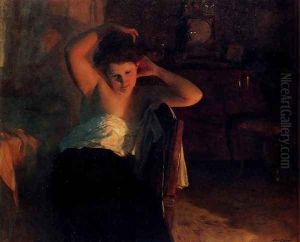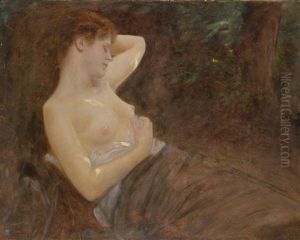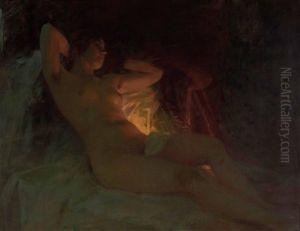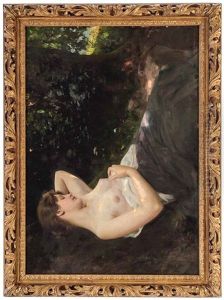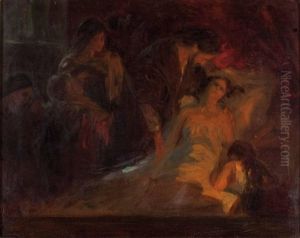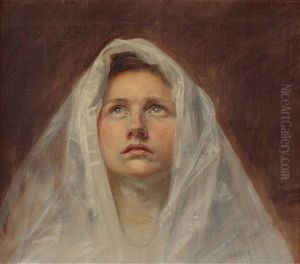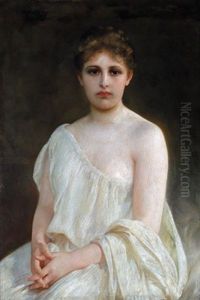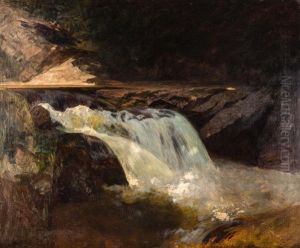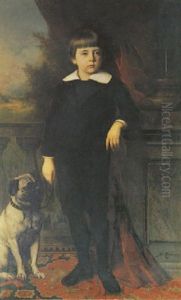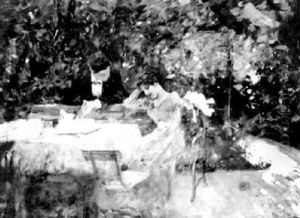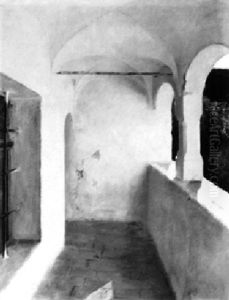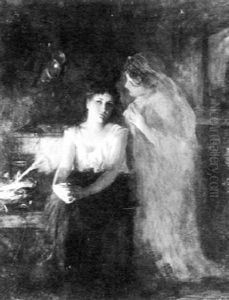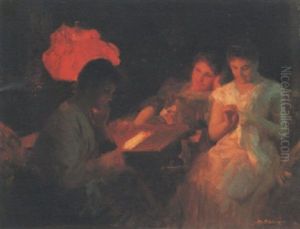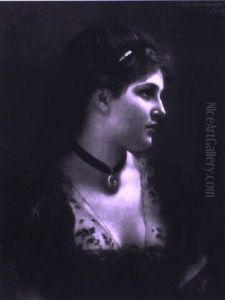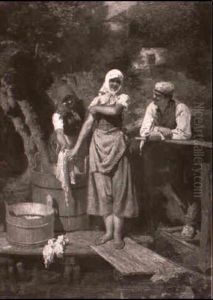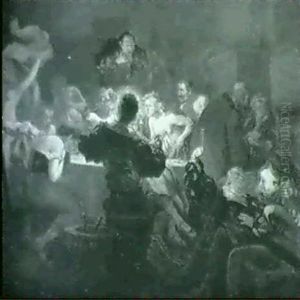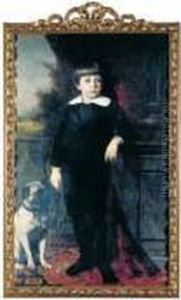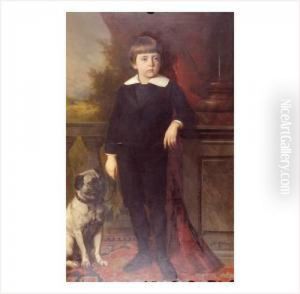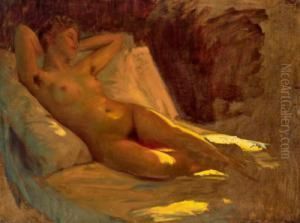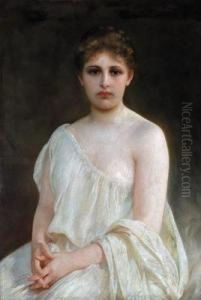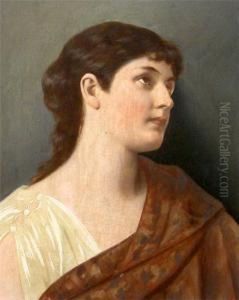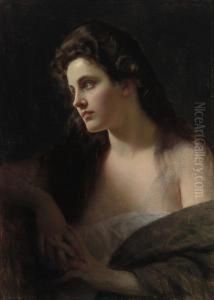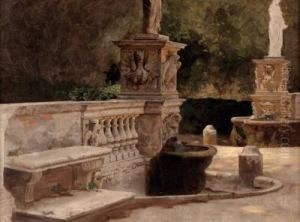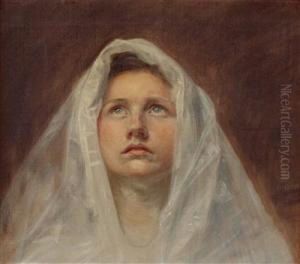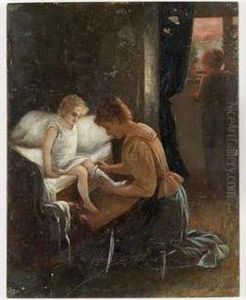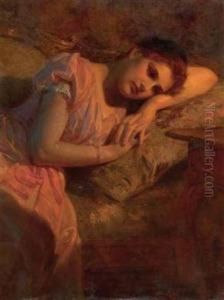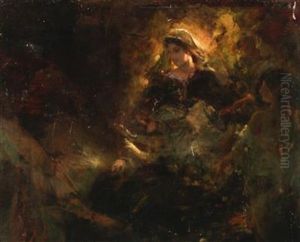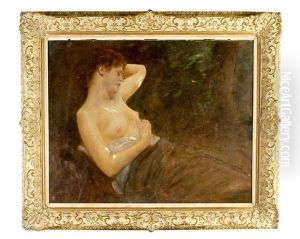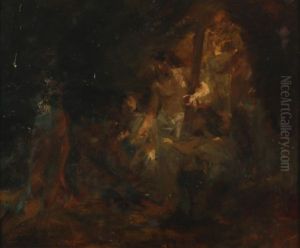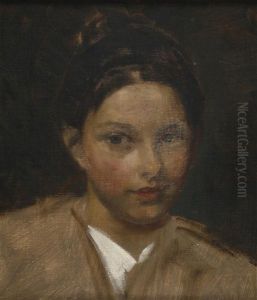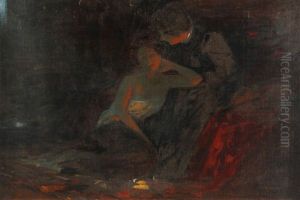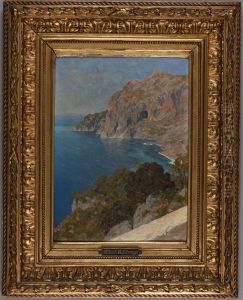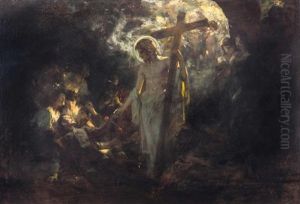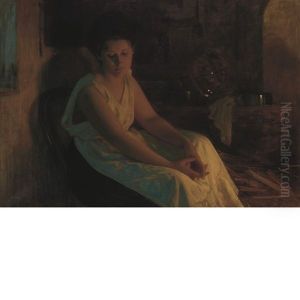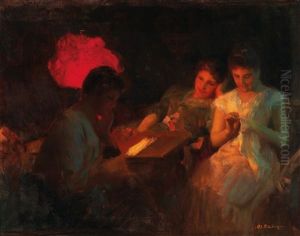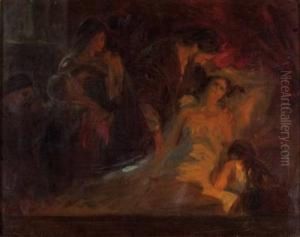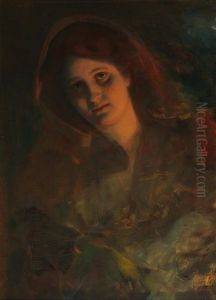Albert Ritzberger Paintings
Albert Ritzberger was an Austrian painter known for his significant contributions to academic and historical painting during the late 19th and early 20th centuries. Born on February 26, 1853, in Langenzersdorf, Lower Austria, Ritzberger demonstrated an early affinity for the arts, which led him to pursue formal education in the field. He studied at the Academy of Fine Arts Vienna, where he was influenced by the academic traditions of the time, focusing on historical and mythological subjects, as well as portraiture.
Throughout his career, Ritzberger was a part of the broader movement in European art that sought to maintain the traditional techniques and subjects of painting in the face of emerging modernist trends. His works are characterized by their meticulous detail, vibrant color palette, and the emotional depth of his subjects. Ritzberger's paintings often depicted scenes from history and mythology, imbued with a sense of romanticism and a deep appreciation for the past. He also painted portraits, which were highly regarded for their expressiveness and technical skill.
In addition to his painting, Ritzberger was involved in the cultural life of Vienna, contributing to the artistic community and participating in numerous exhibitions. His works were exhibited in prestigious venues, including the Vienna Künstlerhaus, of which he was a member. Ritzberger's art was well-received during his lifetime, earning him recognition and awards, and he was celebrated for his ability to capture the grandeur and drama of historical narratives.
Albert Ritzberger's legacy is preserved in various collections and museums, although he is perhaps not as widely known today as some of his contemporaries. His dedication to academic painting and his mastery of form and color place him among the notable Austrian artists of his time. Ritzberger passed away on December 17, 1915, in Vienna, leaving behind a body of work that continues to be studied and admired for its craftsmanship and historical value.

